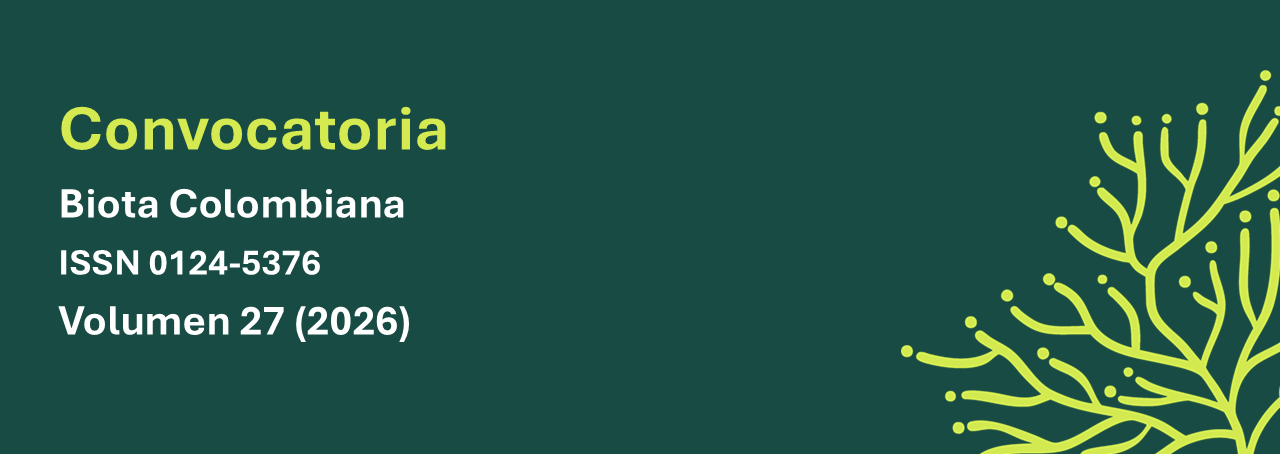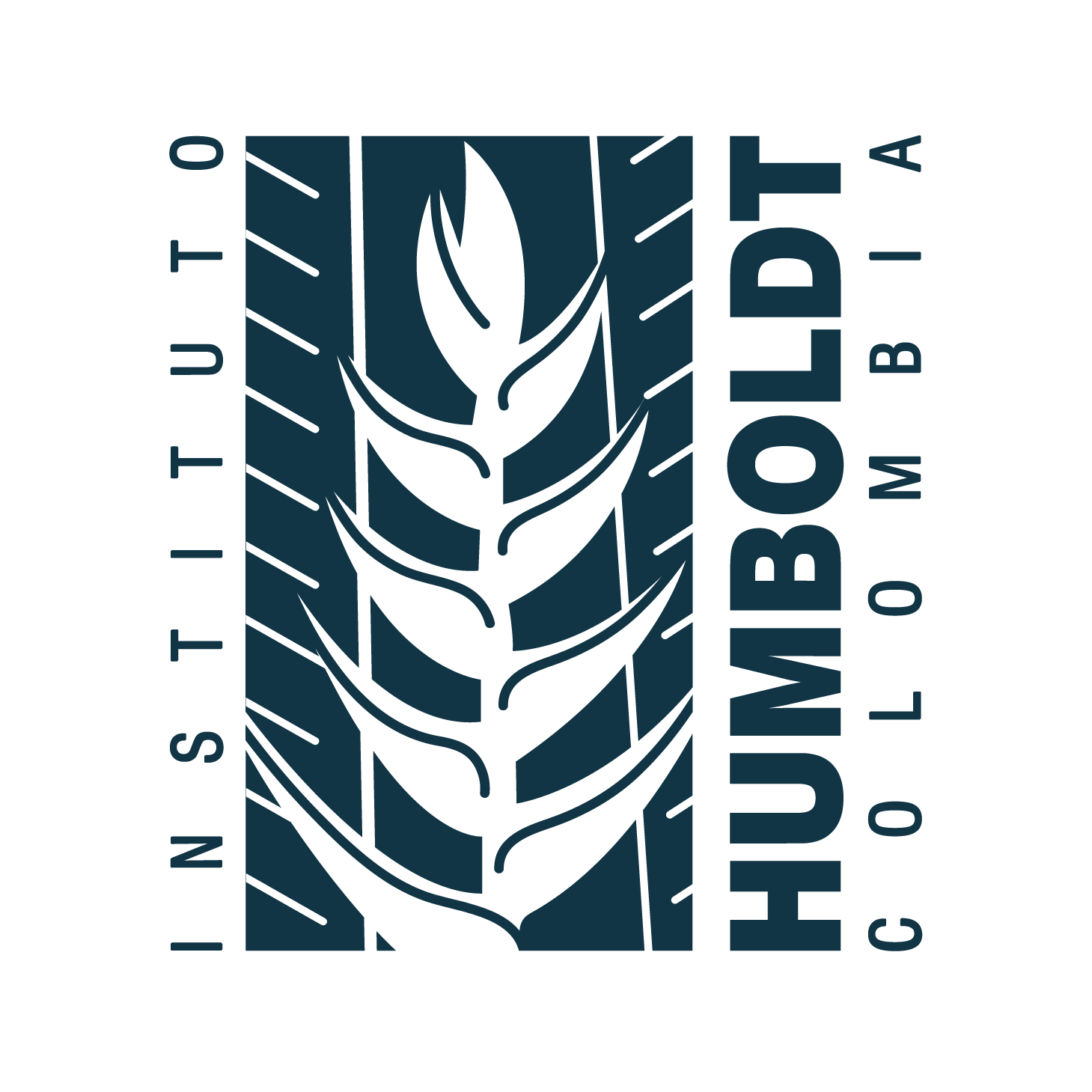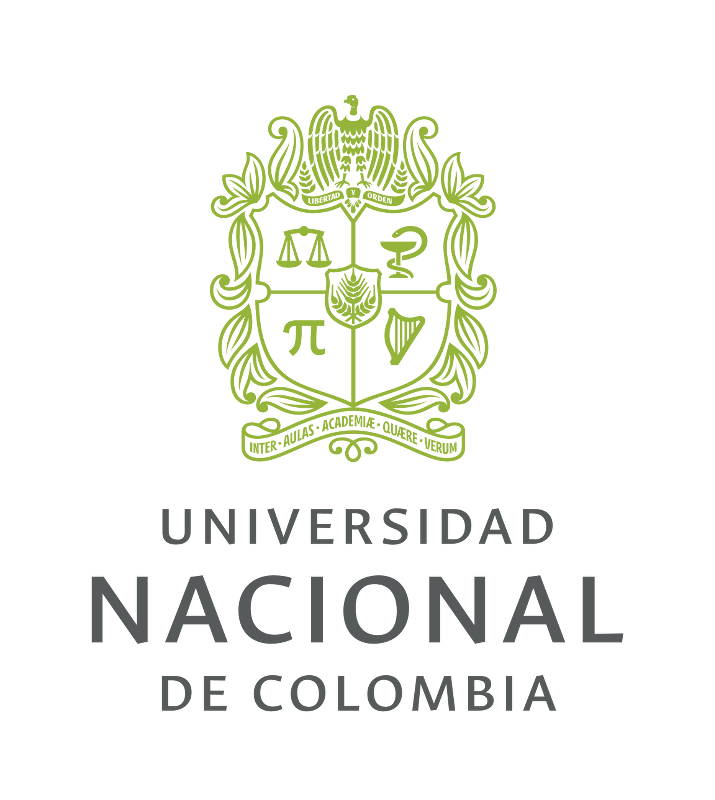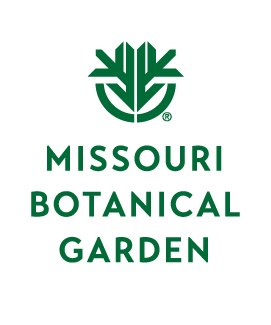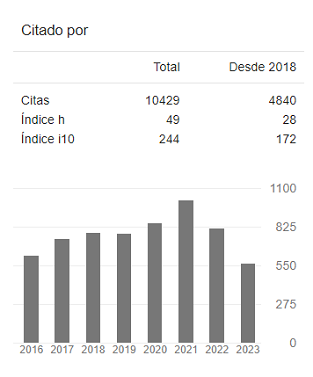Resumen (es):
Este artículo estudia el papel de la regeneración natural en el bosque La Montaña, ubicado en la provincia de Los Ríos, en la Estación Experimental Tropical Pichilingue del Instituto Nacional de Investigaciones Agropecuarias (Ecuador). Para ello, se analizó la diversidad y estructura del bosque, mediante parcelas temporales, donde se evaluaron diferentes etapas de desarrollo: plántulas, brinzales y latizales. De esta manera, se identificaron dos especies (Anacardium excelsum y Pseudolmedia rigida) con un alto número de plantas, que contribuyen a la biodiversidad y la sostenibilidad del ecosistema, y especies con un bajo número (Cordia alliodora, Theobroma cacao, Castilla elastica, entre otras), que requieren de intervención humana para mejorar la salud y diversidad del bosque.
Resumen (en):
This article studies the role of natural regeneration in the La Montaña forest, located in the province of Los Ríos, at the Pichilingue Tropical Experimentation Station of the National Institute of Agricultural Research (Ecuador). For this purpose, the diversity and structure of the forest were analyzed using temporary plots, where different categories of natural regeneration were evaluated: seedling, sapling and latizal. This resulted in the identification of two (Anacardium excelsum y Pseudolmedia rigida) with a high number of plants, which contribute to the biodiversity and sustainability of the ecosystem, and species with a low number (Cordia alliodora, Theobroma cacao, Castilla elastica, among others), that require human intervention to improve the forest’s health and diversity.
Palabras clave:
conservation, restoration, seedling, sapling, latizal, regeneration (en)
Referencias
Acosta, V., Araujo, P., & Iturre, M. (2006). Caracteres estructurales de las masas. Universidad Nacional de Santiago del Estero.
Álvarez, S., Stevenson, P., Fernández, F., López, W., Phillips, O., Restrepo, Z., Rey, J., Villanueva, B., & Melo, O. (2018). Estructura y dinámica del bosque tropical en relación con la variación climática en Colombia: Una revisión de los estudios de la Red COL-TREE. En Biodiversidad y cambio climático en Colombia: Avances, perspectivas y reflexiones (pp. 25-47). Jardín Botánico de Bogotá José Celestino Mutis.
Barreto, A., Gomes, P., Kunz, H., Dias, M., & Abreu, K. (2022). Structure, floristic composition and environmental relationships of natural regeneration in a semideciduous seasonal forest. Ciência Florestal, 32(2), 757-775. https://doi.org/10.5902/1980509848183
Benítez, A., Santini, L., Schipper, A., Busana, M., & Huijbregts, M. (2019). Intact but empty forests? Patterns of hunting-induced mammal defaunation in the tropics. PLoS Biol., 17(5), e3000247. https://doi.org/10.1371/journal.pbio.3000247
Bocanegra-González, K. T., & Guillemin, M. L. (2018). Guidelines for the restoration of the tropical timber tree Anacardium excelsum: first input from genetic data. Tree Genetics & Genomes, 14, 59. https://doi.org/10.1007/s11295-018-1271-z
Calixto, I. S. (2019). Cambios de uso de suelo y ecología vial en la Amazonía peruana: una revisión crítica [Tesis de pregrado]. Pontificia Universidad Católica del Perú. https://core.ac.uk/download/pdf/250405393.pdf
Cañadas, Á., Vilcko, F., Rade, D., Zambrano, C., & Molina, C. (2014). Hacia una descripción de fuste para el Laurel Cordia alliodora en sistemas agroforestales en el Bosque Protector Sumaco, Ecuador. ACI Avances en Ciencias e Ingenierías, 6(1), Article 1. https://doi.org/10.18272/aci.v6i1.157
Centro Agronómico Tropical de Investigación y Enseñanza. (2002). Inventarios forestales para bosques latifoliados en América Central. CATIE. https://repositorio.catie.ac.cr/handle/11554/2600
Chazdon, R. L., Brancalion, P. H., Laestadius, L., Bennett-Curry, A., Buckingham, K., Kumar, C., Moll-Rocek, J., Vieira, I. C., & Wilson, S. J. (2016). When is a forest a forest? Forest concepts and definitions in the era of forest and landscape restoration. Ambio., 45(5), 538-550. https://doi.org/10.1007/s13280-016-0772-y
Chazdon, R. L., & Uriarte, M. (2016). Natural regeneration in the context of large‐scale forest and landscape restoration in the tropics. Biotropica, 48(6), 709-715. https://doi.org/10.1111/btp.12409
Chazdon, R. L., Lindenmayer, D., Crouzeilles, R., Rey Benayas, J., Lazos, E., & Guariguata, M. (2020). La regeneración natural del bosque en tierras abandonadas como estrategia de restauración. CIFOR.
Critical Ecosystem Partnership Fund. (2005). Corredor de conservación Chocó Manabí ecorregión terrestre prioritaria del Chocó-Darién-Ecuador Occidental (HOTSPOT). https://www.cepf.net/sites/default/files/final.spanish.choco-darien-western-ecuador.choco_.ep_.pdf
Crouzeilles, R., Ferreira, M. S., Chazdon, R. L., Lindenmayer, D. B., Sansevero, J. B. B., Monteiro, L., Iribarrem, A., Latawiec, A. E., & Strassburg, B. B. N. (2017). Ecological restoration success is higher for natural regeneration than for active restoration in tropical forests. Science Advances, 3(11), e1701345. https://doi.org/10.1126/sciadv.1701345
Custodio, J., Vargas, G., & Contreras, W. (2002). Germinación, crecimiento inicial y morfología de Castilla elastica (Moraceae) en Tabasco, México. Acta Botánica Mexicana, 129, e1857. https://doi.org/10.21829/abm129.2022.1857
Dovrat, G., Meron, E., Shachak, M., Golodets, C., & Osem, Y. (2019). The relative contributions of functional diversity and functional identity to ecosystem function in water‐limited environments. J. Veg. Sci., 30, 427-437. https://doi.org/10.1111/jvs.12745
Dresler, S., Szymczak, G., & Wójcik, M. (2017). Comparison of some secondary metabolite content in the seventeen species of the Boraginaceae family. Pharmaceutical Biology, 55(1), 691-695. https://doi.org/10.1080/13880209.2016.1265986
Elliott, S., Tucker, N. I. J., Shannon, D. P., & Tiansawat, P. (2022). The framework species method: harnessing natural regeneration to restore tropical forest ecosystems. Phil. Trans. R. Soc. B, 378, 20210073. https://doi.org/10.1098/rstb.2021.0073
Erarslan, Z. B., Karagöz, S., & Kültür, Ş. (2021). Comparative morphological and anatomical studies on Morus species (Moraceae) in Turkey. Turkish Journal of Pharmaceutical Sciences, 18(2), 157. https://doi.org/10.4274/ tjps.galenos.2020.02779
Fathia, A. A., Hilwan, I., & Kusmana, C. (2019). Species composition and stand structure in sub-montane forest of Mount Galunggung, Tasikmalaya, West Java. IOP Conf. Ser.: Earth Environ. Sci., 394, 012012. https://doi.org/10.1088/1755-1315/394/1/012012
García-Cox, W., López-Tobar, R., Herrera-Feijoo, R. J., Tapia, A., Heredia-R., M., Toulkeridis, T., & Torres, B. (2023). Floristic composition, structure, and aboveground biomass of the Moraceae Family in an Evergreen Andean Amazon Forest, Ecuador. Forests, 14(7), 1406. https://doi.org/10.3390/f14071406
GBIF Secretariat. (2023). GBIF Backbone Taxonomy [Checklist dataset]. https://doi.org/10.15468/39omei
Haro-Carrión, X., Loiselle, B., & Putz, F. E. (2021). Tree species diversity, composition and aboveground biomass across dry forest land-cover types in coastal Ecuador. Tropical Conservation Science, 14. https://doi.org/10.1177/194008292199541
Jadán, O., Donoso, D., Ponce-Ramírez, E., Pucha-Cofrep, F., & Cabrera, O. (2022). Six forests in one: Tree species diversity in the Bosque Protector Chongon Colonche, a lowland mountain range in coastal Ecuadorian. Forest Ecosystems, 9, 100069. https://doi.org/10.1016/j.fecs.2022.100069
Jørgensen, P. M., & León-Yánez, S. (1999). Catalogue of the Vascular Plants of Ecuador. Missouri Botanical Garden.
Kumar, M., Sharma, I., Kumar Verma, P., Jit Singh, B., Singh, R., & Kumar Upadhyay, S. (2021). A study on diversity and distribution of Ficus L. (Dicotyledonae: Moraceae) species at Forest Research Institute (FRI), Dehradun (Uttarakhand), India. Journal of Applied and Natural Science, 13(2), 552-560. https://doi.org/10.31018/jans.v13i2.2654
León-Yánez, S., Valencia, R., Pitman, N., Endara, L., Ulloa Ulloa, C., & Navarrete, H. (Eds.) (2011). Libro rojo de las plantas endémicas del Ecuador. Pontificia Universidad Católica del Ecuador.
Lingua, E., Marques, G., Marchi, N., Garbarino, M., Marangon, D., Taccaliti, F., & Marzano, R. (2023). Post-fire restoration and deadwood management: Microsite dynamics and their impact on natural regeneration. Forests, 14(9), 1820. https://doi.org/10.3390/f14091820
Maldonado, S., Herrera, C., Gaona, T., & Aguirre, Z. (2018). Estructura y composición florística de un bosque siempreverde montano bajo en Palanda, Zamora Chinchipe, Ecuador. Arnaldoa, 25(2), 615-630. http://doi.org/http://doi.org/10.22497/arnaldoa.252.25216
Mengich, E., Macharia, J., Mitloehner, R., Too, D., & Muturi, G. (2020). Diameter distribution of indigenous trees as indicator of adapted species in semi-arid rangelands of Kenya. Journal of Tropical Forest Science, 32(2), 144-153. https://jtfs.frim.gov.my/jtfs/article/view/134
Mieles-Giler, J. W., Guerrero-Calero, J. M., Moran-González, M. R., & Zapata-Velasco, M. L. (2024). Evaluación de la degradación ambiental en hábitats Naturales. Journal of Economic and Social Science Research, 4(3), 65-88. https://doi.org/10.55813/gaea/jessr/v4/n3/121
Monterroso-Rivas, A. I., & Gómez-Díaz, J. D. (2021). Impacto del cambio climático en la evapotranspiración potencial y período de crecimiento en México. Terra Latinoamericana 39, 1-19, e774. https://doi.org/10.28940/terra.v39i0.774
Mosquera, H. Q., & Hurtado, F. M. (2014). Diversidad florística arbórea y su relación con el suelo en un bosque pluvial tropical del Chocó biogeográfico. Revista Árvore, 38, 1123-1132. https://doi.org/10.1590/S0100-67622014000600017
Nilar, H., Maute, K., Dawson, M. J., Scarborough, R., Hudson, J., Reay, J., & Gooden, B. (2019). Effectiveness of different herbivore exclusion strategies for restoration of an endangered rainforest community. Forest Ecology and Management, 435, 18-26. https://doi.org/10.1016/j.foreco.2018.12.041
Niziolek, D., Harris, L. B., & Taylor, A. H. (2024). Forest resilience and post-fire conifer regeneration in the southern Cascades, Lassen Volcanic National Park California, USA. Forest Ecology and Management, 561, 121848. https://doi.org/10.1016/j.foreco.2024.121848
Palmer, J. B., Hahn, P. G., Metcalf, E. C., & Maron, J. L. (2022). Seed size of co-occurring forb species predicts rates of predispersal seed loss from insects. Ecosphere, 13(4), e4032. https://doi.org/10.1002/ecs2.4032
Ramírez Guaman, T. G., & Lozano, D. (2024). Diversidad florística y estructura de la regeneración natural del bosque piemontano con intervención de manejo forestal en el sur de Ecuador. Bosques Latitud Cero, 14(1) 105-122. https://doi.org/10.54753/blc.v14i1.2034
Reyes, V., Fernández, Á., Yildiz, A., Petra, B., Bussmann, R., Diamond, S., García, D., Guadilla, S., Hanazaki, N., Kosoy, N., Lavides, M., Luz, A., McElwee, P., Meretsky, V., Newberry, T., Molnár, Z., Ruiz, I., Salpeteur, M., Wyndham, F., Zorondo-Rodriguez, F., & Brondizio, E. (2022). Recognizing Indigenous peoples’ and local communities’ rights and agency in the post-2020 Biodiversity Agenda. Ambio, 51, 84-92. https://doi.org/10.1007/s13280-021-01561-7
Rodríguez-Echeverry, J., & Leiton, M. (2021). Pérdida y fragmentación de ecosistemas boscosos nativos y su influencia en la diversidad de hábitats en el hotspot Andes tropicales. Revista Mexicana de Biodiversidad, 92, e923449. https://doi.org/10.22201/ib.20078706e.2021.92.3449
Rojas, A. M., Durango, C. J., García, S. E., Castañeda-Peláez, D., García, D. A., & Gamboa, F. (2021). Anacardium excelsum phytochemical analysis and in vitro antimicrobial activity against oral cavity microorganisms. Acta Odontol. Latinoam., 34(2), 127-135. https://doi.org/10.54589/aol.34/2/127
Rozendaal, D., Bongers, F., Mitchell, A., Álvarez, S., Ascarrunz, N., Balvanera, P., Becknell, J., Bentos, T., Brancalion, P., & Pourter, L. (2019). Biodiversity recovery of Neotropical secondary forests. Science Advances, 5(3), eaau3114. https://doi.org/10.1126/sciadv.aau3114
Santander, C., & Albertin, W. (1980). Anacardium excelsum, especie forestal de los trópicos americanos. Turrialba, 30(1), 17-23.
Torres B., Herrera-Feijoo, R. J., Torres-Navarrete, A., Bravo, C., & García, A. (2024). Tree diversity and its ecological importance value in silvopastoral systems: A study along elevational gradients in the Sumaco Biosphere Reserve, Ecuadorian Amazon. Land, 13(3), 281. https://doi.org/10.3390/land13030281
Xu, Z., & Deng, M. (2017). Malvaceae. En Z. Xu, & M. Deng (Eds.), Identification and Control of Common Weeds (vol. 2, pp. 717-735). Springer.
Cómo citar

Esta obra está bajo una licencia internacional Creative Commons Atribución-NoComercial-SinDerivadas 4.0.
Derechos de autor 2025 Instituto de Investigación de Recursos Biológicos Alexander Von Humboldt

